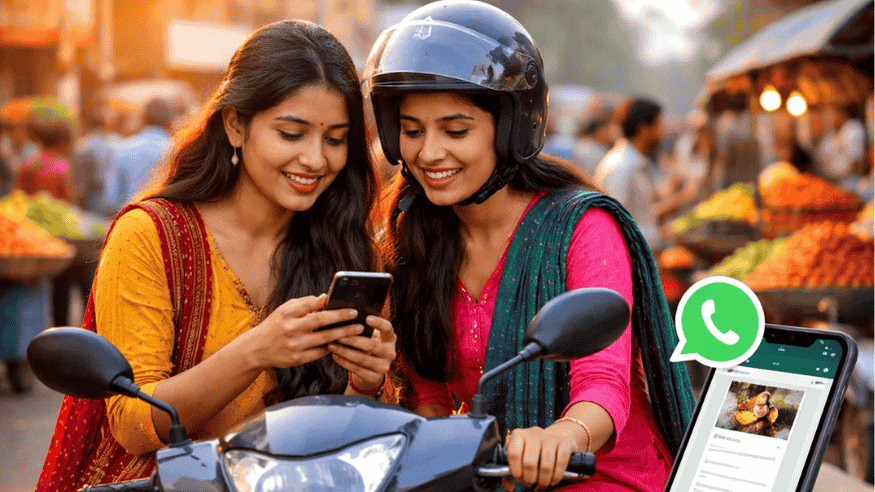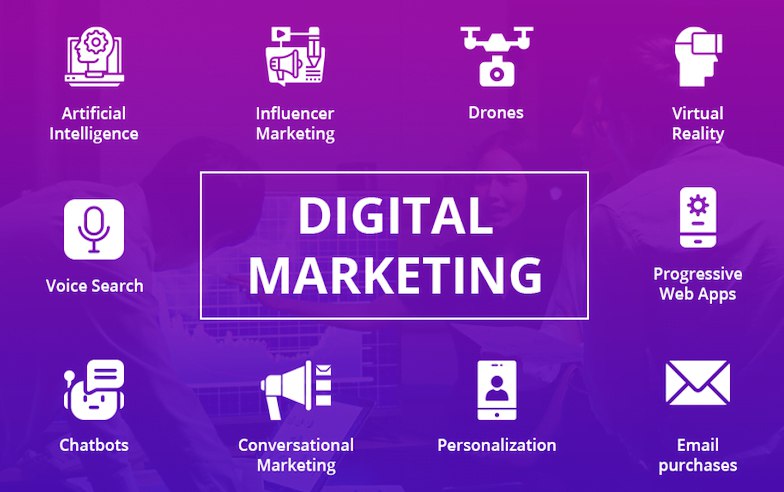Contact Us
Related Posts
Category

In a world where technology and the internet are easily accessible to all, and consumers are more educated than ever, they don’t believe in a one-size-fits-all-for-all content approach. To get the attention of the audience and make them engage in your content, you need to create a strategy that is customized and appeals to the audience at a personal level (by using great content) and to do so, you can use storytelling as a medium.
Since the digital landscape is growing rapidly, so are platforms to share your brand story, values, and company culture, which creates enormous opportunities to connect with your target audience at a personal level by creating beautiful narratives for your audience.
So, we’re gonna check out the main digital channels for telling your brand’s story and see some cool examples to get some ideas and inspirations.
“Brand Storytelling is the art of presenting your brand’s story to the right audience in the right way, coming from the heart and not from the head. This is not like ordinary marketing but a more personalized way to engage the target audience”.
Brand Storytelling Techniques
Being a creative digital marketer, you should understand the virtue of brand storytelling and how creatively it can engage the target audience. There are 3C’s of brand storytelling to begin with that are most valuable for your content. They are-
Craft, Create, Conjure.
Craft a Storytelling Strategy
Just like any other content, storytelling also requires an intention to proceed with. It is important to consider the message you want to convey with your story by asking what you want to achieve from this piece of content and which platform would be best for the same.
Once micro-managing of tasks is done, create an outline just like a piece of short fiction including the beginning, middle, and end. Once the outline is done, humanize the story by including the hero (product/person) whosoever is the main protagonist of your content.
The stories that work well online have emotions and the ability to connect with the target audience at a personal level. Always consider who your audience is and whether it is about a person or a product.
Create Evergreen Content
Always create content that is going to be relevant for years, or you can say is evergreen. When you are trying to reach out to the audience with a meaningful brand story, it has to be powerful and impactful to leave its mark for a long time.
To do this, you need to make sure that the story is not time-bound or related to a specific date or event. It is important to create a story that is not event-bounded (though it works well in a short period) but you need a story that goes for decades and remains relevant for a long time in the future.
Some examples of evergreen formats that can be used as part of every storytelling strategy such as:
- Listicles
- Tips
- How-to content
- Product Reviews
- Videos
Conjure Data-Driven Messages
When it comes to crafting impactful content, data is your ultimate ally. By keeping a close eye on your data analytics, you can easily identify the topics, messages, and visuals that truly resonate with your audience. Armed with this knowledge, you can confidently create future content that is sure to hit the mark.
For instance, imagine you recently produced a series of how-to videos that not only drove traffic to your website but also generated valuable leads. This is a clear indication that your audience is hungry for more educational content about your brand and products/services. So why not leverage this insight to create even more how-to material that will not only boost engagement but also showcase your expertise and value proposition? With data on your side, the possibilities are endless!
For example, a data analytics e-book seller is creating educational YouTube videos to promote his/her course and e-book content. The videos may contain the basics of the subject which the e-book covers till advance later. It can be an amazing plug-in to grow the sale of e-books.
It is imperative to analyze data from various channels to gain a comprehensive understanding of what strategies are yielding positive results. Relying solely on social media metrics is not sufficient, therefore, it is crucial to also examine website traffic, leads, paid campaigns, and email to obtain valuable insights. By implementing these 3 C’s, you can establish a strong foundation for your storytelling that will captivate your audience.
Though there are some channels and technologies that you can use to enhance your storytelling such as:
1. Trend-Driven Storytelling
In the fast-paced digital age, keeping up with the latest trends is essential for successful brand storytelling. Trend-driven storytelling is a strategy that revolves around identifying and leveraging current trends and incorporating them into your brand’s narrative. By doing so, brands can remain relevant, engage their target audience, and create content that resonates with the cultural zeitgeist.
Trend-driven storytelling involves monitoring and analyzing emerging trends in various industries, such as technology, fashion, and pop culture. Brands can then align their messaging, products, and content with these trends to capture the attention of their target audience. This approach allows brands to tap into the collective interests and conversations of their customers, making their content more relatable and shareable.
To execute trend-driven storytelling effectively, brands need to stay vigilant in tracking trends through social listening tools, news sources, and industry reports. They should also be agile in adapting their content and messaging to reflect the evolving trends. By doing so, brands can create narratives that not only reflect the current cultural landscape but also position themselves as innovative and in touch with their audience’s interests.
2. Virtual Reality (VR) and Brand Storytelling
Virtual Reality (VR) has emerged as a powerful tool for brand storytelling, offering immersive experiences that go beyond traditional media formats. VR allows brands to transport consumers into a virtual world where they can interact with the brand and its products or services uniquely and engagingly.
In VR brand storytelling, the technology is used to create immersive narratives that resonate with the brand’s identity and values. For example, a travel company can use VR to take potential customers on a virtual tour of exotic destinations, allowing them to experience the thrill of travel without leaving their homes. This not only showcases the brand’s offerings but also creates a memorable and emotional connection with the audience.
One of the key advantages of VR brand storytelling is its ability to trigger strong emotional responses. When consumers feel deeply immersed in a virtual world, they are more likely to form a lasting impression of the brand. VR also enables storytelling through user interaction, allowing consumers to shape the narrative and engage with the brand on a more personal level.
However, VR brand storytelling requires careful planning and investment in technology and content creation. Brands need to ensure that the VR experience aligns with their overall brand messaging and delivers value to the audience. It’s also essential to consider accessibility issues and the availability of VR hardware among the target audience.
3. Social Media Storytelling
Social media has become a cornerstone of brand storytelling in the digital age. It provides a platform for brands to connect with their audience on a personal level, share their brand stories, and build a community of loyal followers. Social media storytelling involves using various platforms like Facebook, Instagram, Twitter, and TikTok to craft and share narratives that resonate with the target audience.
Social media storytelling encompasses a wide range of content formats, including text, images, videos, and live streams. Brands can use these formats to share behind-the-scenes glimpses, customer testimonials, product demonstrations, and more. The key is to create content that is authentic, relatable, and tailored to the platform’s unique characteristics and audience preferences.
Effective social media storytelling involves a few essential elements:
Consistency: Brands should maintain a consistent tone, style, and messaging across all social media platforms to build a recognizable brand identity.
Engagement: Responding to comments, engaging in conversations, and actively participating in social media communities can help foster a sense of connection and trust with the audience.
Storytelling arcs: Brands should develop compelling narratives that keep the audience engaged over time, using techniques like episodic content or storytelling series.
Visual storytelling: Visual content, such as images and videos, often performs better on social media platforms, so brands should invest in high-quality visuals.
User-generated content: Encouraging customers to share their experiences with the brand can add authenticity to the storytelling and create a sense of community.
Dark Social Storytelling
Dark Social refers to social sharing that occurs outside of publicly accessible social media platforms, such as private messaging apps, email, and direct messaging. This form of sharing is challenging for brands to track and measure, but it presents unique opportunities for storytelling.
· Customize and Format your URLs –
To track dark social shares, brands can customize and format their URLs using tools like UTM parameters. This allows them to gain insights into how links are shared and clicked in private channels.
· Use Social Listening-
Social listening tools can help brands monitor conversations about their products or services in private messaging apps and email. This information can be used to tailor future storytelling efforts.
· Make Sharing Easy –
Brands should make it simple for users to share content through dark social channels by incorporating share buttons and providing easily copyable links.
· Use GA4 (Google Analytics 4) –
GA4 offers improved tracking capabilities, allowing brands to gain better insights into dark social traffic and user behavior.
· Think about Mobile –
Since much dark social sharing occurs on mobile devices, brands should optimize their content for mobile viewing and sharing.
· Use Dark Social Tools –
There are tools and platforms designed to help brands track and analyze dark social sharing. These tools can provide valuable data to inform storytelling strategies.
· Use Lead Generation Forms –
In dark social channels, brands can use lead-generation forms to collect valuable customer information and engage users in ongoing conversations.
Brand Storytelling – Conclusion
In conclusion, brand storytelling is a dynamic and multifaceted discipline that encompasses various strategies and techniques to engage and connect with audiences in the digital age. From trend-driven storytelling that adapts to current cultural trends to the immersive experiences of VR brand storytelling, brands have a plethora of options to craft compelling narratives.
Social media storytelling allows brands to establish a personal connection with their audience through relatable and authentic content, while dark social storytelling presents a unique challenge and opportunity for tracking and measuring sharing in private channels.
Ultimately, the effectiveness of brand storytelling lies in its ability to create emotional connections, drive engagement, and communicate a brand’s values and identity. By understanding and leveraging these storytelling techniques, brands can build lasting relationships with their audiences and remain relevant in an ever-evolving digital landscape.
Tell your Brand Story with OMR Digital
OMR Digital specializes in helping brands enhance their storytelling efforts. OMR Digital offers various solutions for brand storytelling, including content creation, social media management, analytics, and more.
OMR Digital for your brand storytelling needs offerings that align with your brand’s goals and objectives. Features that enhance your storytelling capabilities, such as content planning and creation tools, data analytics to measure performance, and the ability to integrate with various storytelling channels, including social media and emerging technologies like VR are the specialty of OMR Digital.
Collaborating with OMR Digital can streamline your brand storytelling efforts and provide valuable insights and resources to help you connect with your audience effectively. So don’t wait and contact us via email at info@omrdigital.com or phone at +91-898-954-3589 and create the best brand story.














































































